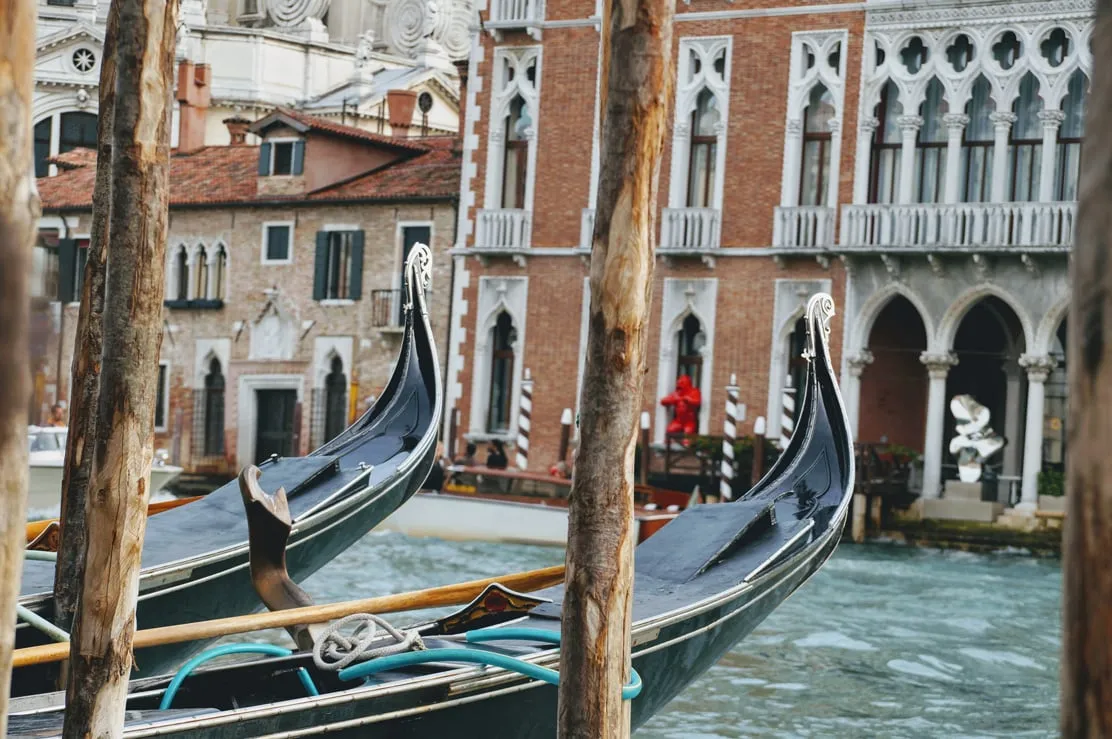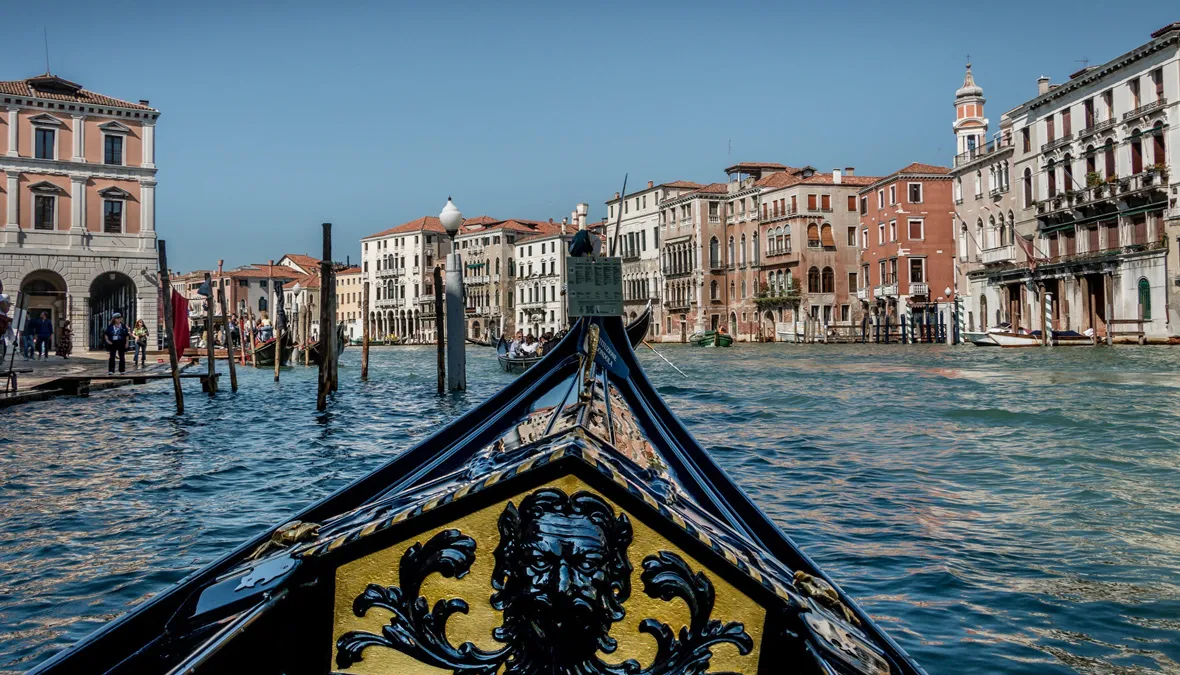Venice, the enchanting floating city, has long been a symbol of romance, history, and culture. The image of gondolas gently gliding on the blue waters of the canals, with skilled gondoliers at the helm, is deeply ingrained in the minds of travelers from all over the world. Indeed, exploring Venice by gondola is not just a tourist activity, but also a journey back in time, a unique cultural experience, and the best way to fully appreciate the beauty of this city.
The History and Evolution of the Gondola
The gondola has a long and fascinating history, closely linked to the development of Venice. The term “gondola” appeared as early as the 11th century, but its predecessor is believed to be the “scaula,” a flat-bottomed, slender Roman boat. The advantage of the scaula was its ability to maneuver easily through Venice’s complex network of canals, something other boats could hardly do.

As Venice became an important trading center in the 16th century and the population grew rapidly, the scaula was no longer suitable for the crowded canals. Thus, the design of the boat began to change. Boats became longer and narrower, with the hull rising higher above the water. By the 1800s, the gondola had reached its current dimensions: about 11 meters long and weighing about 350 kg. The characteristic asymmetrical shape of the gondola was developed in the early 20th century and has remained unchanged ever since.
Private Gondolas: Symbols of Luxury and Power
The popularity of the gondola increased rapidly, and it became the most common means of transportation in Venice. At the same time, the gondola also became a symbol of luxury and style. New gondolas were lavishly decorated, attracting wealthy merchants and nobles who wanted to show off their wealth on the Grand Canal.
Many luxurious gondolas were equipped with special amenities, including small cabins called “felze,” which helped passengers avoid bad weather and ensured privacy. There was even a tacit agreement between gondoliers and passengers about discretion, making these small cabins ideal locations for secret meetings and romantic encounters.

The Traditional Black Color of Venetian Gondolas
So why are all gondolas in Venice black? The answer lies in the wealthy merchants and nobles who flaunted their wealth excessively. To curb this, the Venetian authorities issued a law requiring all gondolas to be painted black.
Today, you may occasionally see a few brightly colored gondolas on the Grand Canal. However, Venice still requires all gondolas to be painted in dark colors, and many gondoliers still prefer to adhere to tradition by painting their boats glossy black.
The Elaborate Gondola Production Process
Traditional Venetian gondola production takes place in “squeri” – specialized boatyards. Here, skilled craftsmen use special types of wood, such as oak, mahogany, lime, walnut, pine, cherry, elm, and fir, to create the different parts of the boat. The process takes about two months to complete, and a typical gondola costs up to 38,000 euros.
One of the best ways to truly appreciate the beauty of the gondola is to visit one of these boatyards. Squero San Trovaso is one of the most famous gondola boatyards in Italy, where you can learn about the laborious boat-building process. The carving of the characteristic curved oarlock (la forcola) is a particularly laborious art, and witnessing its creation will help you better understand the craftsmanship behind the boat.
Who Owns the Gondolas in Venice?
In the old days, four gondoliers often shared ownership of a gondola, with three rowing and one assisting on the dock. Today, however, gondolas and gondoliers are tightly controlled by an association, which is responsible for overseeing boat production, maintenance, and licensing.
The Number of Gondolas in Venice Today
During the golden age of the gondola in the 17th and 18th centuries, it is estimated that there were about 8,000 to 10,000 boats navigating the canals of Venice. Today, however, there are only about 400 Venetian gondolas used by licensed gondoliers, mainly serving tourists.
Gondoliers: The Soul of the Venetian Experience
A gondola would not be complete without a gondolier. Gondoliers are often an integral part of the experience, with interesting local anecdotes and extensive knowledge of gondola history. However, not all gondoliers sing.

Nevertheless, their role is extremely important. Without a gondolier standing firm and rowing skillfully, the boat would easily capsize. The gondolier’s position in the boat helps balance the weight and stabilize the asymmetrical shape of the gondola.
Tips for a Memorable Gondola Ride
To have a complete gondola experience in Venice, you should book your ride in advance through reputable tour companies. Tours that combine gondola rides with visits to other famous Venetian landmarks, such as St. Mark’s Basilica, Doge’s Palace, and the Rialto Market, will give you a comprehensive view of the city.
Conclusion
Experiencing Venice by gondola is an unmissable journey when visiting this city. More than just a means of transport, the gondola is a symbol of Venice, carrying within it history, culture, and unique charm. Let the gondola take you through the romantic canals, explore hidden corners, and fully experience the beauty of Venice, a unique floating city in the world.